Earlier this year, a lot of Indians heaved a sigh of relief when Delhi was downgraded by WHO from the top spot to the 11th position in the world’s most polluted cities list. It was one of those rare times when the word ‘downgraded’ was a cause for celebration.
The joy was short-lived, though, as more than 30 Indian cities jostled for a place in the top hundred, led by Gwalior, Allahabad, Patna and Raipur. Uttar Pradesh, aside from being the gateway to a prime seat of power in New Delhi, is also home to four of the world’s 20 most polluted cities – a distinction shared by no other state in any other country.
Global warming is already a reality and an epochal environmental catastrophe is only a few decades away (this author is highly sceptical of non-legally-binding climate-change agreements). Research has repeatedly highlighted the fact that the poor will be the most affected by this disaster. India, with its high levels of poverty, will not be spared. Rampant, unorganised growth strategies and projects with thinly veiled disdain for the environment will only serve to hasten and deepen its effects. Defenders of this policy regularly cite the facts that India has 17 per cent of the world’s population but causes only 6 per cent of global CO2 emissions, and that on a per-capita basis, the average Indian’s annual CO2 emissions will only increase from 2 tons to around 3.5 tons in 2030 (for comparison, the United States is at 16.6 tons per capita today and by 2030, it may go down to 10 tons). Hence the argument that if the rich countries want us to do our part in solving this problem, then they better pay for it”which is partly fair. But what often gets overlooked in this debate is that even a low carbon emission rate when multiplied by a billion is significant enough. And when both numbers are on an upwards trajectory and GDP becomes the sole indicator of a country’s progress, there will be little room to excuse India from its share of culpability in the planet’s deterioration.
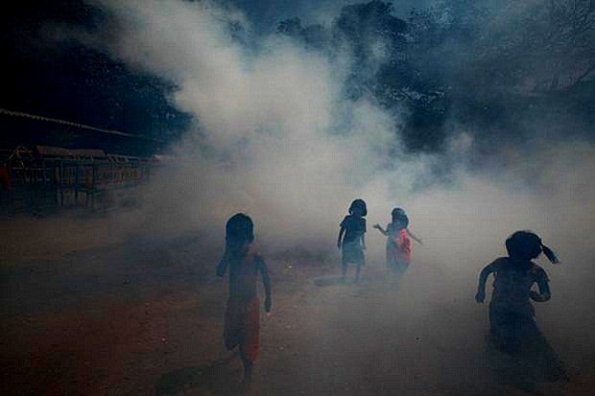
Those at risk, those who will survive
Studies, including those by the UN, have already shown that it is the poor who are at a higher risk of being affected by climate change. The 2014 IPCC report explicitly described it: ‘People who are socially, economically, culturally, politically, institutionally, or otherwise marginalised are especially vulnerable to climate change and also to some adaptation and mitigation responses.’ Slum dwellers, small farmers, labourers working outside in the heat, fishing communities – these are some of the groups who are the most vulnerable to this anthropogenic disaster. This is expected, though – the poor usually have little resources to mitigate or adjust to shocks and sudden upheavals, and also tend to live in unsafe places prone to flooding, landslides and state apathy. The UN report had also stated that climate change would make it harder for developing countries to reduce poverty levels and would widen inequality. India, with its ever-expanding population, millions of poor citizens, dependency on agriculture, unbearably hot climate, and a lengthy coastline, is ripe for a climate-change catastrophe.
Aside from vacuous promises and a lot of hand wringing, not much has been done by the government. An already bad situation has been aggravated by the current government’s hyperactive ministry of environment, forests & climate change (MoEFCC) which seems to be under some mistaken assumption that it is the ministry of corporate affairs, so enthusiastic have been its efforts to clear industrial and mining projects”without correctly assessing the impact on the environment, forests and climate change.
In June of last year, an unprecedented number of projects (229) were given forest clearance. In the two years that Javadekar (now the HRD minister) had been in charge, 349 mining projects were given the green light. The ministry’s main ‘revolutionary’ goal seemed to be to bring down the average approval period to 100 days. In 2014, the Supreme Court had asked the government to put on hold around 140 projects cleared by the environment ministry’s reconstituted National Board for Wildlife (NBWL). Nevertheless, the minister’s own policy indicated that environmental concerns were a roadblock to the nation’s ‘progress’, that it surely did not matter if some forests were cleared, land and water resources were contaminated beyond repair, or that we ended up destroying the natural habitats of animals and humans – all were fair game when it came to development because GDP growth and the next Lok Sabha (or UP) elections were all that mattered.
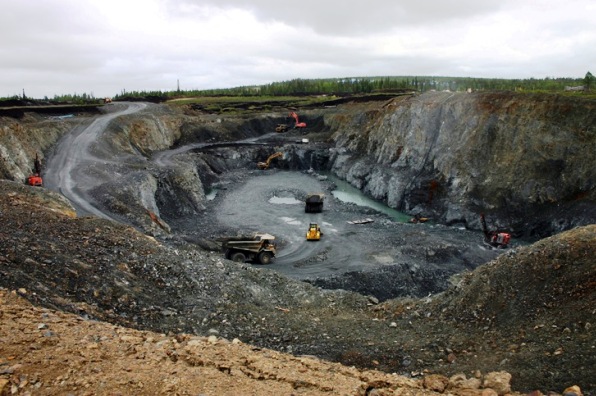
Environment is seen as a hurdle even when, as per estimates by the Centre for Science and Environment (CSE), the rejection rate due to environment clearances and forest clearances is 1 per cent and 3 per cent, respectively. Even a neo-liberal institution like the World Bank has advised India that ignoring ecological concerns will hamper future long-term growth prospects. It has already projected that environmental damage costs the nation 5.7 per cent of its GDP annually. One can only surmise that they didn’t get the memo that in politics a week is a long time, and that long term as a concept simply does not exist.
The poor, destitute Indian
Despite all the evidence, why then are Indians not more worried? Why the callous, devil-may-care attitude towards the environment? Have we conveniently outsourced our concerns to the NGO, social activist ‘types’? Does the immediate promise of acche din outweigh the future certainty of a dystopian, doomed society?
Let’s get this out of the way: One of the main reasons surely has to be the most ubiquitous aspect of this country – its unimaginable levels of poverty. After all, it is easier to care about issues like climate change when you have the luxury of time, space and money to actually understand the consequences and act accordingly. When your daily existence is a never-ending battle to secure basic needs, other issues can easily take an esoteric form. If you are lucky enough to be poor and still have access to information, you could still care but resources are limited, if at all they are available. Even then, many of the rural poor display a more nuanced appreciation of nature and do much more to preserve and defend it than their urban and rich counterparts. This obviously has to do with them actually fostering a relationship with the environment and their dependency on it. Around 200 million Indians depend on forests for their income, not to mention the even greater number of farmers. But with the ongoing war that is being waged against the tribals, adivasis, small farmers and labourers by the state and capitalist entities, it becomes clear that it will continue to be profits over people (and the environment).
The entitled Indian
But where does that leave the middle and upper class sections of our country? The denizens of a superpower in waiting, the champions of Swachh Bharat and ‘Selfie with Daughter’, the darling of the Facebooks and Apples of the world? Few people from these privileged sections bother about their carbon footprint and strive to live an eco-friendly lifestyle. Fewer still are active in actually taking up environmental causes. Global warming is a terrifying spectre, sure, but aside from the scorching summers, it doesn’t actually affect them in the here and now and, hence, takes up very little mind space. This despite the fact that air pollution is the fifth largest killer in India.
WHO studies have already shown that the highest urban air pollution levels were experienced in low- and middle-income countries in Eastern Mediterranean and South-East Asia regions, with annual mean levels often exceeding WHO limits 5″10 times. Critics will point out that these studies are flawed since certain kinds of pollutants are excluded in the research or that many cities do not even bother to monitor pollution levels. All true, but anyone who has lived in and inhaled the Indian air can vouch for its quality. You need only jog your memory to last year to remember the Chennai floods which exposed the haphazard way in which our cities are built, with scant regard for any planning, or the hazy smoke covering Mumbai for days thanks to the Deonar landfill being up in flames (a passerby might have thought the whole city was high), and the yearly ritual of the dengue epidemic in the nation’s capital”it has a better ‘on time’ arrival record than the Delhi Metro. And we are only talking about the nation’s biggest cities here; the smaller ones have it much worse.

It is also known (at least if you think of it) that residents in urban areas take up the lion’s share of natural resources, including land, water and fossil fuels. They are also the greatest contributors to pollution of every kind. Take for example the sheer number of private vehicles plying on the narrow, poorly constructed roads of our country; these will only go up from the current 117 vehicles per 1,000 people to 683. Residents would rather be under the mistaken assumption that building more flyovers would solve the problem of traffic congestion (it doesn’t), while ignoring the implications of the increased pollution that it gives rise to. There is also an aversion towards using public transport even when it is effective and available, especially among the elites. The end result is that the number of private vehicles and, therefore, congestion see an increase, the environment is further damaged, health risks go up, and the poor pay the highest price in navigating a further polluted city with poor infrastructure. Funds that can be used to develop and improve public transport and basic services are instead used to construct flyovers and roads, so that urban elites have to spend five minutes (if at all) less time travelling in their air-conditioned cars. Take the news that was reported in 2014 that the Brihanmumbai Municipal Corporation (BMC) was going to spend Rs 27 crore to extend a flyover in Goregaon West by just 300 metres, even when there was zero evidence that it would improve traffic congestion. As has been wisely said, mobility is about moving people, not private vehicles. Better solutions would be to have effective traffic management, high parking fees, more investment in buses and other low-cost public transport, and higher costs of acquiring cars on the basis of available road capacity.
And then you have the wild appropriation and clearing of fertile land to build dodgy apartment buildings, the increasing pressure on water supply, the never-ending demand for electricity for household and entertainment purpose (think of those always glittering malls), and entitled citizens who don’t think twice before littering every possible nook and cranny of their cities and towns. Stringent laws and well-designed policies are the need of the hour, but the question of implementation and mobilising a pampered community to give up part of their privilege remains. After all, there’s this propensity in our culture for short-term fixes while adopting a que sera sera attitude towards the future. We Indians like to think that societal bonds are important to us, but in reality it is restricted to the familiarity of our families and close relatives. What happens outside this small circle is rarely of any concern and our own well being takes the highest priority. The contract that we have with the larger society is flimsy, basic, and has no substantial give-and-take. Probably because we know that even if we give away part of our comforts, there will be little to take from an ineffectual, corrupt system. That still doesn’t exonerate us from our part in this toxic cycle of exploitation, especially when the future of the planet is at stake.
The clueless Indian
The lack of awareness about environmental issues starts from childhood, thanks to our education system which does a half-baked job in teaching students about it. It may occupy a chapter in NCERT textbooks or probably be an entire subject if the student is lucky enough to have parents who can afford an IB or a CBSE school. But even when it’s taught, the emphasis is on pedagogical theories and immediate fallouts rather than practical ways to mitigate the worst of its effects. In a similar vein, environmental studies is peddled as a soft science and rarely gets the funds and attention that is accorded to other sciences, technology, health and economics. Equally responsible is the lack of effort on the government’s part to create awareness and urgency among the populace (why couldn’t Swachh Bharat place equal emphasis on a Green Bharat?) on these issues. Public-policy interventions in this regard have been woefully inadequate. Every government since Independence has focused more on investing in curing public health concerns rather than researching on why those issues exist in the first place, all of which are inextricably linked to the high levels of pollution and environmental damage. ‘Prevention is better than cure’ remains a popular but unused adage.
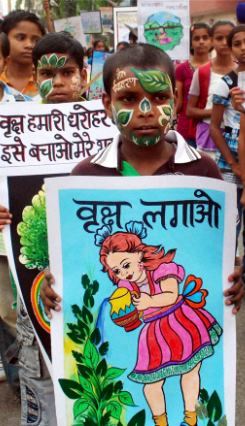
The dirty Indian
A discussion on the apathy of Indians towards their environment couldn’t be complete without touching upon the fact that this country is stinkingly dirty. This frankly embarrassing reality has a strange relationship with us – we know it’s dirty, we know it’s unhygienic and gives rise to multiple diseases, and yet we manage to ignore it with a zen-like zeal that will make even the staunchest ascetics proud. The old trope remains true – we go full OCD about keeping our own homes clean while jauntily littering public spaces because aren’t we honest, tax-paying citizens and hence entitled to do as we please? It isn’t our job to keep the streets clean and yet we look down upon people who are paid a pittance to do exactly that. Thoughtlessly dumping garbage anywhere has several negative fallouts – it increases health risks, gives rise to pollution, poisons our land and water bodies, clogs up the drainage system, and hurts animals and plants. But then, when even our temples and holy rivers are chock-full of debris, can one expect any better from our streets?
The dirty Indian is a better adjective to describe us than Sen’s rather complimentary ‘argumentative’. And as always, the poor pay a heavier price even if the upper-class sections turn up their dainty noses at the slums dotting every small and large city, never mind that their residents are in survival mode. There’s a tragic reason why slums exist and despite being aesthetically unpleasing, they generate less waste and take up less energy and water than upmarket areas. In Mumbai, estimates show that slums occupy around nine per cent of the total area but their dwellers are 55 per cent of the population. Class divisions are well and truly alive in this country and yet the elites profess surprise when class warfare breaks out.
The apathy of the state and its corporate shareholders
There’s the indifference accorded to the rampant plundering of natural resources by the state and big corporates. Even the most environment-friendly intellectuals among the upper strata of this country barely register a whimper at the way forests, land and water are being appropriated for mining and industrial projects, even when they wreak infinitely more havoc than the poor and their ‘dirty’ habits. And when people who actually care raise a hue and cry against these injustices, there is a tendency to dismiss them as meddling, anti-national NGOs and activists. There is also a concerted effort by the powers that be to suppress bad news and peddle the good ones through outright lies and convenient statistics, to mould and misdirect public opinion. For example, while the Forest Survey of India regularly comes with the good news that forest cover has increased, the definition that it uses is so generous that even Delhi’s Lodi Gardens qualifies. The truth is that forest cover has declined substantially over the years, and even after accounting for the subterfuges by official bodies, around 2,510 square kilometres of very dense and mid-dense forests have been wiped out since 2013 alone. But who’s counting?
The redeemable Indian?
In all this, the role of corporate India has been abysmal at best. Aside from a few tree-planting drives (a go-to activity for every big and small company out there) and getting some state-of-the-art green facilities in their own factories and offices, there’s little of substance that has been done towards actually saving the planet. CSR and sustainability are buzzwords that are usually used to drive projects that benefit them and their employees while refusing to assess the complex ways in which they impact the environment – the tremendous amount of fossil fuels consumed, the daily output of piles of garbage, shady land deals without so much as a second thought for the surrounding wildlife, flora and local communities, and the poisoning of natural resources which inevitably follows any for-profit intervention.
As per a 2007″08 Gallup poll, only 35 per cent of Indians were aware of climate change and just 29 per cent perceived it as a threat. Thankfully, just over half agreed that it was due to human activity, probably because as a country we have seen too many unseemly things to have a high opinion of humans in general. Last year’s survey by Pew Research Centre had better news – 7 in 10 Indians surveyed thought climate change was a serious threat, much better than is the case with the overly privileged citizens of the Global North countries. Interestingly, as per this report, 70 per cent support government limitations on GHGs – which means, despite the small sample size and heavy skew towards the urban populace, support for more eco-friendly policies can be mobilised with the right communication, intention and investment. The problem is that of intent and competing priorities, or so we are told by the elites. The idea of GDP versus the environment is sold to us even when both short-term and long-term evidence points out that both can be, and should be, balanced. An India with high growth and plenty of jobs is crucial, but none of that will matter if the threshold of 2 degrees Celsius is crossed, which it surely will. There’s so much more that can be done by the state to educate its own people, instead of limiting its activities to climate change conferences like last year’s COP21.
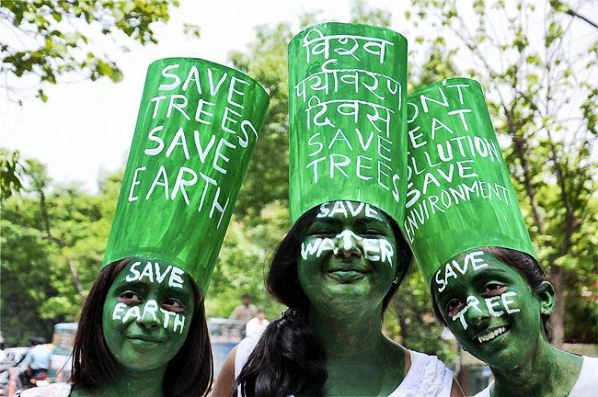
A related question remains open, though. While there may be some awareness about the implications of global warming, is there much being done by the ordinary Indian? Another survey by Nielsen in 2011 showed that Indians are far more concerned about day-to-day issues like air and water pollution which have a more direct and immediate effect than climate change, which is seen as a long-term problem, with no direct impact upon them (?), and still ripe for a resolution through the power of technology. All three assumptions indicate a distinct lack of understanding of the urgency of this issue, and this needs to be addressed. It is worrisome that this country can treat the actual existence”forget well-being”of its future generations in so cavalier a manner. And the fact that a warming planet is indelibly linked with health issues and poverty is either ignored or not yet known. Yes, Indians do care about the environment but as long as it doesn’t affect them personally, they are probably going to ease off on that panic button. Which is probably the reason why although many Indians claim to prefer eco-friendly products, fewer tend to actually buy the same on a regular basis.
Surprisingly, a National Geographic survey in 2010 found that India was the most environment-friendly and green country in the world, at least among the 17 major economies that were covered in the study. Some of the findings had less to do with being conscious of the environment and more to do with an unavoidable compulsion of the country’s reality. After all, lack of access to hot running water, using public transportation and eating vegetarian food can all be attributed to low income, chronic under-development of services, and cultural aspects rather than any enthusiastic zeal to save the planet. These are also some of the reasons why India still has one of the lowest carbon emissions per capita in the world (1.7 metric tons per capita in 2011 as per WB data), especially for a country of this size. Even then, the aforesaid survey claimed that Indians are more likely to be concerned about the environment, which seems incongruous with one’s experience of actually living in the country. The country is as dirty as ever, recycling rarely happens, and consumption and pollution levels are up. It’s not so much an appreciation for all things green and natural as an inability to afford or access a comfortable, energy-guzzling lifestyle.
Thoughts
An interesting, and slightly technical, study has shown that it is possible to have an egalitarian and sustainable society, primarily through the example of Cuba, which, despite its many imperfections, does score consistently on parameters such as education, health and life expectancy. Often we are told that it’s an either”or scenario, that if you want to live in an equal society that actually works for its citizens, then you may have to do away with sustainability goals. Yet, lower consumption, greener planet and lesser inequality are intuitive, interrelated concepts when you actually take time to think about it. The unhealthy obsession with consuming more resources and guzzling out more CO2 will be catastrophic, not just to ourselves but the entire world. The planet cannot afford another China, spewing out poisonous gases into its atmosphere. While there’s no denying that our emissions will have to increase, a gradual plateauing has to be on the cards, if we are to survive.
It is quite ironic when the government tells you that it has billions of rupees to spend on vanity projects like DMIC or the interlinking of rivers, projects that are unlikely to be ever completed, while refusing to invest in clean and green technology initiatives because there’s the budget deficit and because growth is very, very important. The good news is that a good proportion of Indians are somewhat aware of climate change, even if their knowledge may be superficial. It is imperative that this awareness is mobilised into collective action, so that the right measures for a greener planet can be taken. Government policies can be shaped, streets can become cleaner, the air can become fit enough to breathe, and we can still save those trees and our precious wildlife – all this if we care enough. As of now, the evidence sadly points to the contrary.
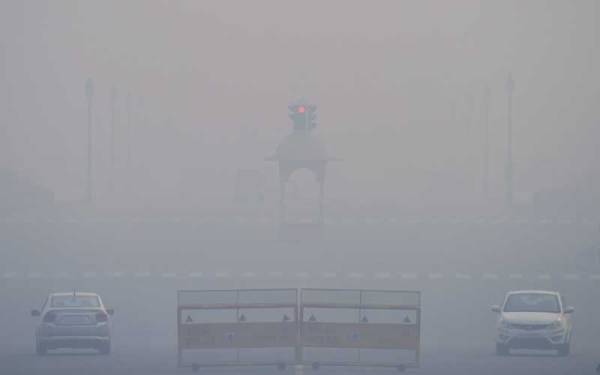
The perpetual smog cover of Delhi
